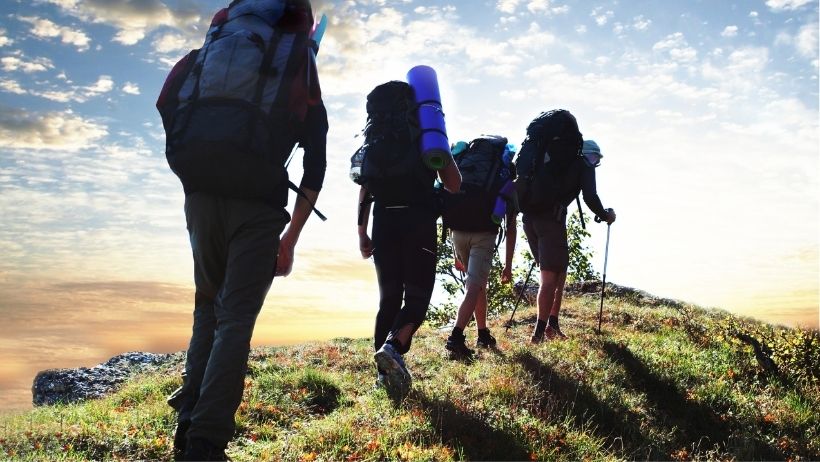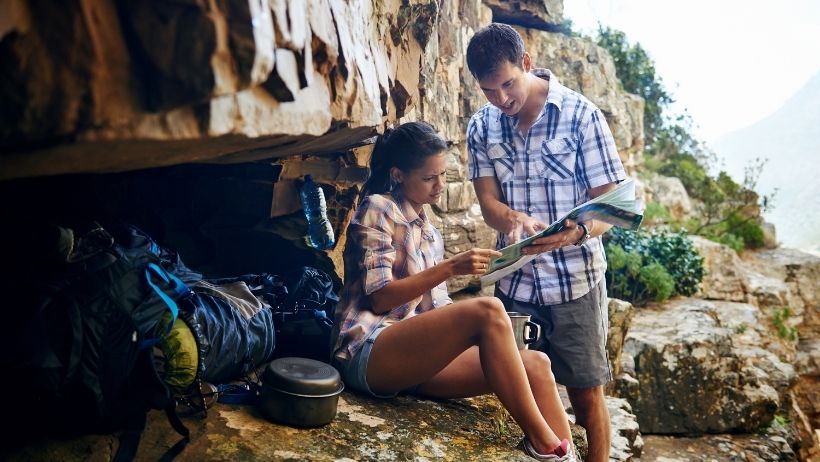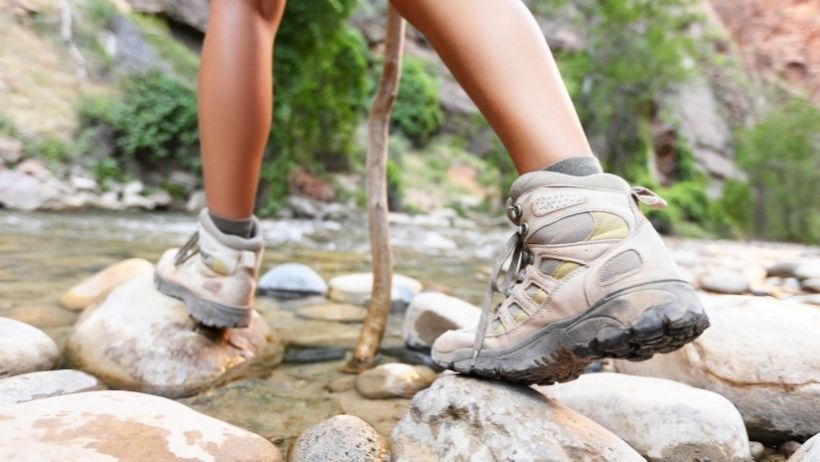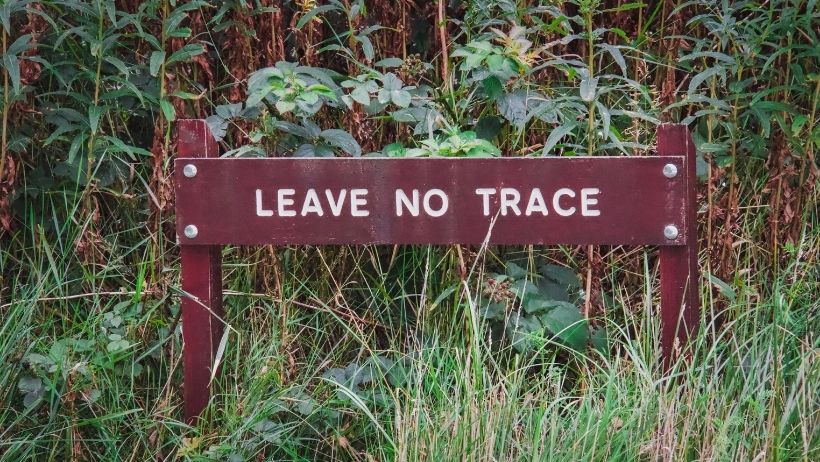10 Hiking Tips for Beginners
Do you want to finally start hiking, but feel unsure whether you are ready for it?
Do you often ask yourself whether you are fit enough to hike at all, which hiking route is suitable for you and how do you find such a hiking route in the region in which you want to go hiking?
Are you wondering what exactly you need to get started and don’t want to appear completely haphazard in the outdoor business?
Hiking is becoming more and more popular and there are more than enough reasons for a long walk in nature. Here are the ten tips for newcomers to the hiking world.
The right route
Choosing the right hike is essential. While a walk through the fields behind the house hardly needs planning, things look different when you are in nature for several hours.
Make your decision about the right route based on the following criteria:
- the personal fitness level of all involved
- available daylight
- weather condition
When hiking for beginners, the following applies: it is better to start with shorter stretches on signposted hiking trails. Picnics, photo stops, and breaks for children or untrained fellow hikers always take longer than expected. The information on signs and information boards usually only indicates the actual running time and does not include any necessary breaks.
In the winter and autumn months, it also gets dark in the afternoon, especially when the sky is overcast. Always plan a time buffer.
Check the weather forecast the day before and the morning before, then it is the most reliable. Pack your backpack accordingly. Often there are different micro-climates in the vicinity so that you can often avoid bad weather.
Realistic self-assessment
Increase the difficulty and length of your hikes according to your fitness level and your outdoor experience. In general, you can stick to the following assessment: Beginners cover a maximum of 4 kilometers per hour on relatively flat ground.
On mountainous hikes with steep ascent and descent, as a precaution, calculate with a maximum of 2 kilometers per hour. In the ascent, 3oo meters of altitude per hour are estimated and 500m in the descent.
For example, if you arrive at the starting point at 11 a.m. after a leisurely breakfast and an hour’s drive, you will need at least four hours of walking time for a route of 12 kilometers on mixed terrain. There is also a two-hour break to check the menu, take photos, eat bread, etc. So don’t expect to be home before 6 p.m. If in doubt, choose a shorter route.
Water
The most important asset in a hiking backpack is water. Especially on hot days, it is essential to drink enough water to avoid dizziness and circulatory collapse. In this way, the fluid balance remains balanced when the body is sweating away from water.
The amount of water required depends on the length of the hike and the weather conditions. As a precaution, count on 2-3 liters per person. To avoid excess weight, check a hiking map to see if there are water sources such as small streams. With a water filter, such as the award-winning Sawyer Mini, you can refill your bottle on the go and save weight.
Onion principle
For hiking, dress according to the onion principle: with many layers. On a hike lasting several hours, you are exposed to different conditions. At first, the body warms up, then maybe the sun looks out, and the wind whistles on the summit. To compensate for this, layers of clothing are the best. Zips can be opened briefly for ventilation and vests specifically warm the upper body.
Special tip: the bottom layer (called the base layer) is the most important. The decisive factor here is the material. Avoid cotton, which cools the body; merino wool or sports materials are better.
Shoes & Feet
Shoes are as important to hikers as surfboards are to surfers. They are the most essential part of your outdoor equipment. Choose wisely which shoes you need for which surface and take care of your feet. Ankle-hugging hiking boots with a good profile are indispensable on difficult, mountainous terrain. On long, flat asphalt stretches, you are often well-advised to wear lighter running shoes.
In any case, your footwear has to fit well. To prevent friction, it is also advisable to rub your toes and heels with petroleum jelly, deer tallow, or something similar and to wear good hiking socks. Take off your shoes during breaks to let your feet dry and cool. Cover up a blister with a blister plaster at the first sign.
Orientation
There are many ways to get familiar with the area and the hiking route. Hiking maps provide information about the altitude, the type of landscape (e.g. forest, moor), place names, and natural monuments worth seeing. You can also get an overview of the hiking route with Google Maps or GPS. In hiking guides, you will find information about the history and flora, and fauna on certain hiking trails.
Of course, many novice hikers first follow path markings or rely on the local knowledge of fellow hikers. But knowing where you are right now can offer invaluable advantages in a wide variety of situations. It can help you, for example, to estimate the remaining distance, to find shelters and water points, or to find the way back. All of these are especially useful when darkness falls or a storm comes up.
The weather report
Find out about the weather and adjust your plans if necessary. While hiking in the rain can be a wonderful experience, avoid hiking in thunderstorms, especially in mountain ranges. Fog also has its pitfalls. It robs the view and lets hikers lose their way. But all these weather phenomena are part of nature and can be a special experience.
Stay in sight
If you are traveling in a group, you should try to stay in sight, especially when hiking for beginners. Of course, everyone would like to hike at their own pace and chat more or less, but in nature, you get lost faster than expected. A junction with a hidden trail marker or a series of hills can quickly divide groups. Then you have to spend time to find yourself again. And if someone is injured, being close to them will give them more help and confidence, while their absence will have the opposite effect.
Respect nature
Too often modern life makes people forget that they are part of nature. And yet it is important to be aware that we are guests in certain areas. Wilderness areas are not outdoor fitness studios where people can let off steam to their heart’s content in front of a gigantic backdrop, they are the dwindling habitat of various animals and plants.
To respect and preserve you, hikers in English-speaking countries have put together the leave no trace principles. Overall, it is about not influencing or polluting nature through the presence of people. Be it taking rubbish with you, avoiding noise, leashing dogs, protecting water, or not touching plants and animals. This heightened mindfulness is also good for humans. It ensures a more intense experience of nature.
Emergency Contact
On longer hikes, make sure that at least one person is aware of your plans and will be expecting you back at a certain time. Even if the cell phone reception is not always good, it is still worthwhile to have a cell phone with a charged battery with you.






